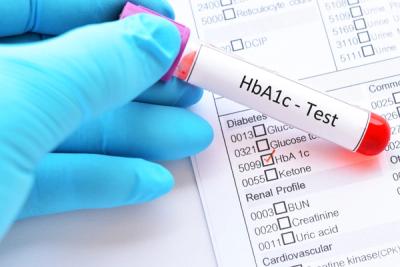
Introduction
If you have been diagnosed with prediabetes this guide is for you. It is created by doctors and nurses with years of practical experience helping patients with prediabetes. The information in this guide is what they would want you to know if you could spend the day together.
First you will learn what prediabetes is, why it happens, and how it is diagnosed. Then you will learn about the lifestyle changes that can improve and potentially reverse prediabetes. This includes nutrition information that is based on the latest scientific research.
Important: This website is provided for information only. It must not be considered medical advice or recommendation. Some or all of the information may not be appropriate for your individual needs. The Prediabetes Guide is not intended to cover all aspects of prediabetes. You must consult with an appropriate healthcare professional for all your medical needs. By using this website you agree to the terms and conditions.
Contents

What do you know about prediabetes? Understanding prediabetes is the first step to regaining your health. Prediabetes is an opportunity. If you've just been diagnosed with prediabetes, or have had it for years, you can take back control of your blood sugar level and your health.

What will happen to prediabetes over time? Each year about 1 in 10 people will go on to develop type 2 diabetes. But it doesn't have to be this way. Almost everyone can improve prediabetes and many people can reverse it. What will you choose?

Prediabetes happens due to combination of genetic risk and lifestyle. This means some people may be more likely to develop prediabetes. However, it is lifestyle that really makes the difference, especially food and drink choices. In this article we learn what leads to insulin resistance and how this causes high blood glucose.

Lifestyle includes nutrition, movement, sleep, and mindset. Whilst we are not all the same, there are some common factors that contribute to the development of prediabetes. In this article we discover what these are.

Prediabetes is about a lot more than blood sugar. Insulin resistance, which leads to prediabetes, causes many symptoms. These include an increase in belly fat, fatigue, skin tags, and brain fog. People may also experience high blood pressure, an unhealthy blood fat profile, and liver and kidney problems.

How do you know that you have prediabetes? A blood test is used to diagnose prediabetes. The most commonly used test is called HbA1c. In the past an Oral Glucose Tolerance Test was used. In this article we discuss these blood tests and the levels that diagnose prediabetes.

What are the core lifestyle changes that will improve and reverse prediabetes? Nutrition, movement, sleep, and mindset all have a beneficial impact on prediabetes. In this article we learn about the choices that can achieve the greatest improvements. What will you decide to do?

"What should I eat?". Knowing what to eat to improve and reverse prediabetes doesn't need to be a mystery. There is not a one-size-fits-all plan, but there are some simple approaches that can be personalised. In this article learn which foods should be reduced and which can be enjoyed. Choose an approach that suits you and use the traffic light food lists.

Now it is time to get practical and create success. In this article we cover the 6 simple steps for improving prediabetes. Know why your health matters and what you will do. Then pick a start date, get going, and learn as you go. Have a healthier and happier future.
This Prediabetes Guide is provided by Preventative Healthcare Group. We believe everyone should have access to trustworthy, straightforward, and useful health information.
We want to know if there is anything missing from this guide and how it could be improved. Use the feedback boxes at the bottom of every page to send us your recommendations and requests.